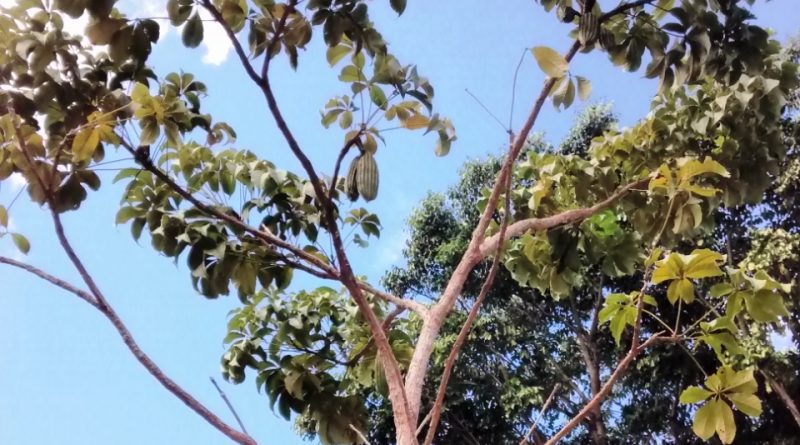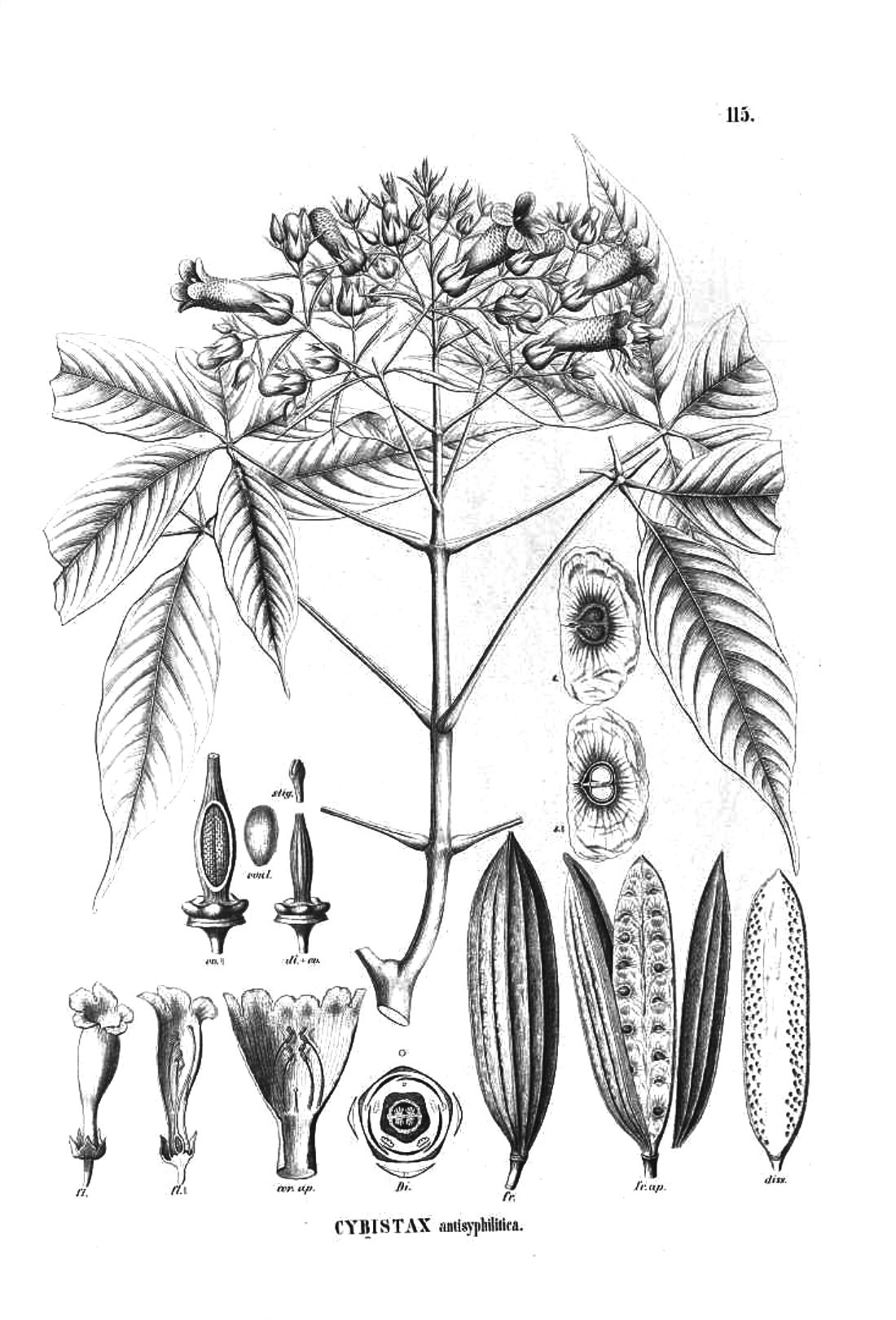Cybistax antisyphilitica
Cybistax antisyphilitica
Bignonia quinquefolia (Cybistax antisyphilitica (Mart.) Martius.) Is an arboreal species belonging to the Bignoniaceae family.
Systematic –
From a systematic point of view it belongs to the Eukaryota Domain, Kingdom Plantae, Subregion Tracheobionta, Superdivision Spermatophyta, Division Magnoliophyta, Class Magnoliopsida, Subclass Asteridae, Order Scrophulariales, Family Bignoniaceae and therefore to the Genus Cybistax and to the Species B. antisyphilitica.
The terms are synonymous:
– Bignonia antisyphilitica Mart .;
– Bignonia quinquefolia Vell .;
– Bignonia rivularis DC .;
– Bignonia viridiflora Lodd .;
– Cybistax coriacea Corr.Méllo ex Stellfeld;
– Cybistax intermedia Corr.Méllo;
– Cybistax quinquefolia (Vell.) J.F. Macbr .;
– Cybistax sprucei K. Schum .;
– Cybistax subtomentosa K. Schum .;
– Cybistax tinctoria (Spruce) Tittel;
– Phryganocydia antisyphilitica Mart. ex DC .;
– Yangua tinctoria Spruce.
Etymology –
The term Cybistax is of unclear origin.
The specific antisyphilitica epithet comes from the Greek ἀντί antí and from the modern medical Latin syphilis syphilis: useful plant in the treatment against syphilis.
Geographical Distribution and Habitat –
Cybistax antisyphilitica is a plant native to a range that includes South America and in particular northern Argentina, Paraguay, Bolivia, Brazil, Peru, Ecuador and Suriname.
Its habitat is that of scrub areas and, only occasionally, within dense primary forests, where it grows at altitudes ranging from sea level (commonly from 300 meters upwards) up to 2,000 meters.
Description –
Cybistax antisyphilitica is a semi-deciduous tree that grows 6 – 12 meters in height. The trunk has a diameter of 30 – 40 cm and the wood is fine-grained, light in color, good in the construction of furniture.
The leaves are greyish green, opposite, palmate.
In early spring, the plants carry, at the ends of the ram, showy clusters of bright yellow funnel-shaped flowers, 2–2.5 cm wide.
The pods are 25-50 cm long, straight, hanging and brown with, inside, thin and flat seeds.
The seeds have structures that allow them to be dispersed.
Cultivation –
This plant is grown for its leaves in the Peruvian Andes.
It adapts to subtropical or tropical areas up to 2,000 meters.
It prefers a sunny position and sandy and rocky soils with good drainage.
Propagation is done by sowing. The seeds, as soon as they mature, are placed, if possible, in a seedbed or in individual containers. Germination rates are typically above 60%, with the seeds sprouting within 15-25 days. The seedlings grow slowly, taking 5-6 months before they are ready for transplanting.
Transplanting the seedlings from the seedbed to the individual containers should be done when they are 5-6 cm high.
Young plants grow quite slowly, not exceeding a height of 2.5 meters after 2 years.
Uses and Traditions –
Cybistax antisyphilitica is the only species of the genus Cybistax.
The plant has been, since ancient times, a Brazilian folk remedy as an emeto-cathartic, alterative and tonic in the treatment of syphilis and for the jaws.
In particular, the bark and young branches are considered antisyphilitic, purifying and stimulating; they are also used to treat urinary retention and edema.
A blue dye is obtained from the leaves of this plant, as a substitute for indigo.
The light colored wood has a fine texture and a light to moderately heavy weight. It is considered suitable for general constructions, internal applications, lathes, general carpentry, packing cases and as a source of fiber for writing paper.
Preparation method –
The bark and young branches of this plant are used, with various procedures, linked to the various popular traditions, as a remedy for various diseases.
Guido Bissanti
Sources
– Acta Plantarum – Flora of the Italian Regions.
– Wikipedia, the free encyclopedia.
– Treben M., 2000. Health from the Lord’s Pharmacy, Tips and experiences with medicinal herbs, Ennsthaler Editore
– Pignatti S., 1982. Flora of Italy, Edagricole, Bologna.
– Conti F., Abbate G., Alessandrini A., Blasi C. (edited by), 2005. An annotated checklist of the Italian vascular flora, Palombi Editore.
Warning: Pharmaceutical applications and alimurgical uses are indicated for information purposes only, they do not in any way represent a medical prescription; therefore, no responsibility is accepted for their use for healing, aesthetic or food purposes.


